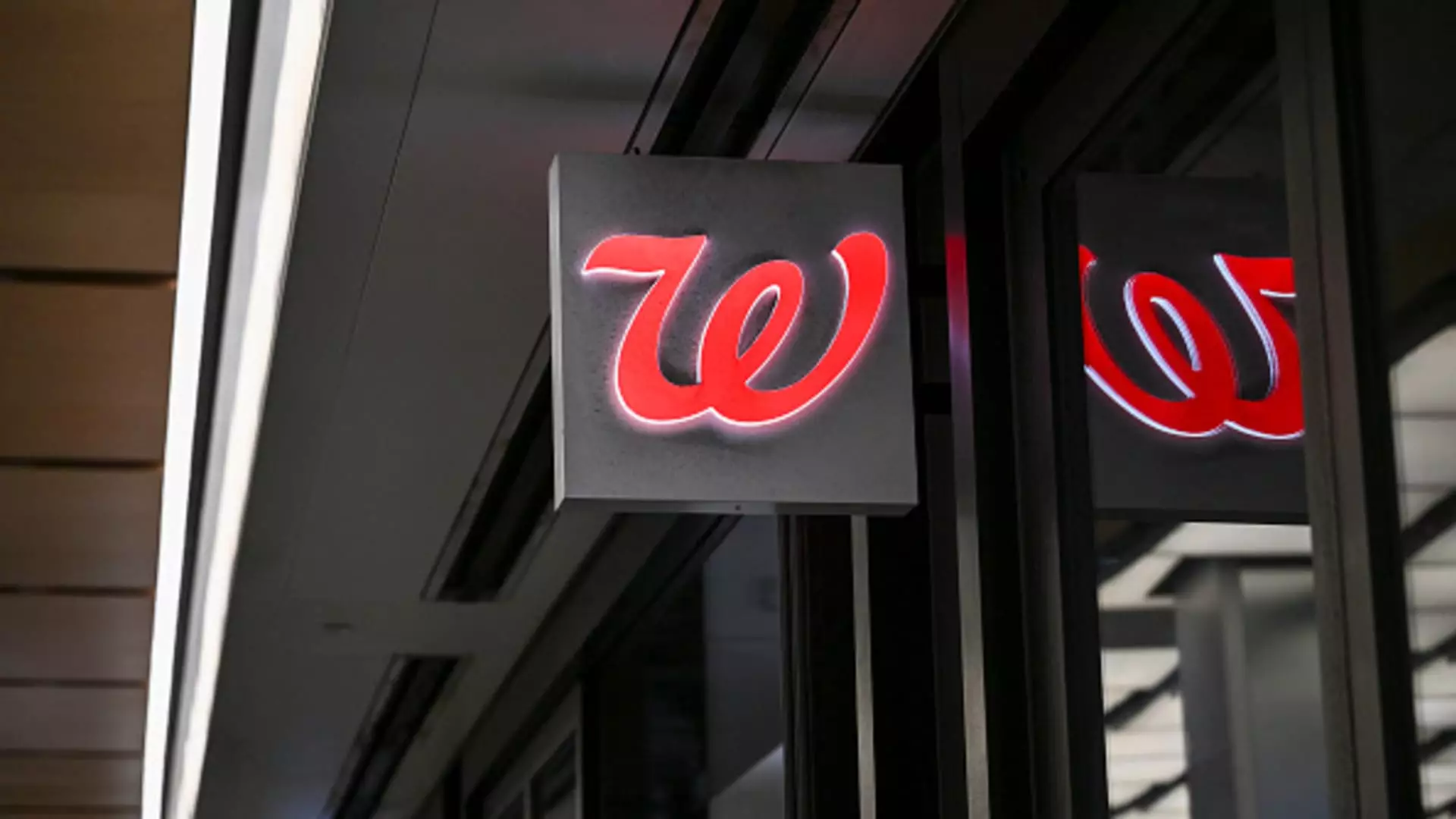Walgreens has recently announced a series of financial results that tell a compelling story of a company in the throes of transformation. After nearly a century of being a public entity, Walgreens is inching toward a veil of privatization under the aegis of Sycamore Partners, a move that can be described as both a gamble and a sanctuary in these turbulent economic waters. Valued at approximately $10 billion, this deal marks the end of an era and introduces a refreshing yet unsettling uncertainty about the future of one of America’s long-standing retail drugstore chains.
In an environment where pharmacy reimbursement has become increasingly challenging and consumer behavior is in flux, Walgreens appears to be caught between a rock and a hard place. The decision to withdraw fiscal 2025 guidance further underlines the precariousness of its position. This decision could be viewed as a pragmatic move; however, it also illuminates a troubling fragility within the company’s operational backbone.
Cost-Cutting: A Double-Edged Sword
In a bid to claw back some financial stability, the company has initiated dramatic cost-cutting measures, which may temporarily buoy their earnings but could jeopardize their long-term viability. While it’s impressive to report fiscal second-quarter earnings that exceeded Wall Street’s expectations—63 cents adjusted versus the anticipated 53 cents—the risks associated with aggressive downsizing cannot be overlooked. The company’s net loss of $2.85 billion, although an improvement from the previous year’s staggering $5.91 billion loss, remains disconcertingly high.
Cost reduction might make for attractive headlines, but it often leads to a paradox: cutting essential services and personnel can alienate loyal customers and diminish the quality of care provided. For a business that has firmly anchored itself in the health sector, any erosion in service quality would not just be a failure of management; it would also inflict harm on the community it serves. Are these short-term wins worth the long-term implications of losing touch with Walgreens’ core purpose?
Competition Breeds Innovation, but Also Anxiety
Competing against giants like CVS, grocery chains, and the ever-expanding Amazon creates a challenging landscape that necessitates innovation. However, Walgreens’ fight for relevance is compounded by an ongoing struggle to adapt. Not only does the company face pressure from external competitors, but it is also grappling with its own missteps, particularly in its recent push into health care. The aspiration to diversify into primary care clinics has been fraught with complications, evident from the hefty $4.2 billion charge associated with losses in the value of its investments.
The market is merciless, and whether or not Walgreens can pivot successfully remains a question riddled with uncertainty. As they withdraw from public expectations and transition into private ownership, leisure time and patience may become luxuries they cannot afford. This open door into the exclusive realm of privatization not only shields them from instant public scrutiny but also places them under an obligation to deliver significant returns, raising the stakes in an already high-pressure environment.
A Royally Troubled Past: Legal Setbacks and Financial Scrutiny
While Walgreens attempts to pivot, their legal entanglements add layers of complexity to an already tumultuous narrative. The market has seen a staggering $969 million bleed from their operating cash flow due to opioid-related settlements alone, not to mention ongoing disputes with virtual health companies. Such legal liabilities further strangle their potential recovery and highlight a broader indictment on the pharmaceutical industry.
The challenges extend beyond numbers; they penetrate the very essence of customer trust. In an age where consumer consciousness about corporate accountability is heightened, Walgreens’ financial tribulations compounded by legal missteps threaten to alienate a demographic eager for change. Failure to rectify these issues might just tether Walgreens to the adverse reputation that could haunt them long after they’ve made the jump into privatization.
In this precarious moment, Walgreens stands at a crossroads. The path they choose will not only define their financial health but could also determine the future trajectory of retail pharmacy as a whole. As the entanglements of the past hurtle forward into the future, the question remains: can Walgreens forge a radical turnaround, or will it be yet another case study in the extinction of a once-beloved institution?

Leave a Reply